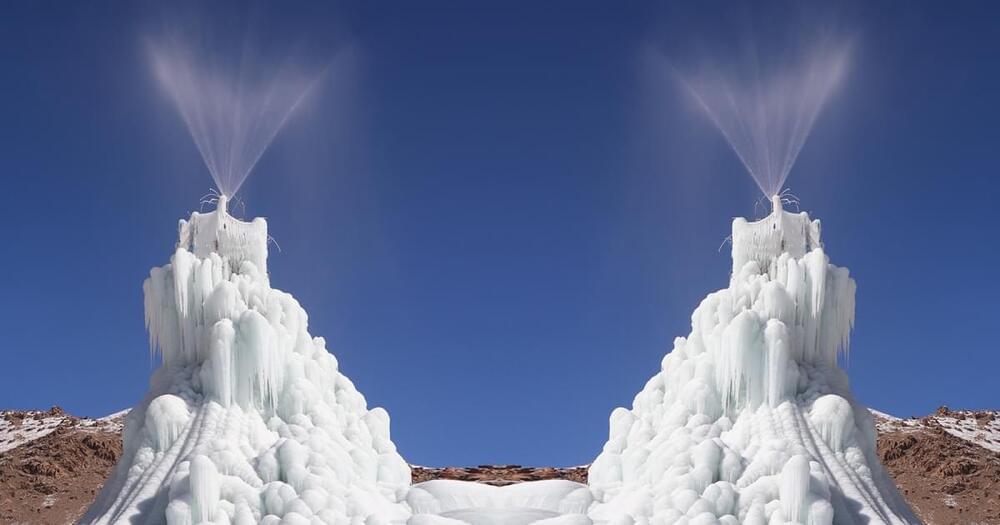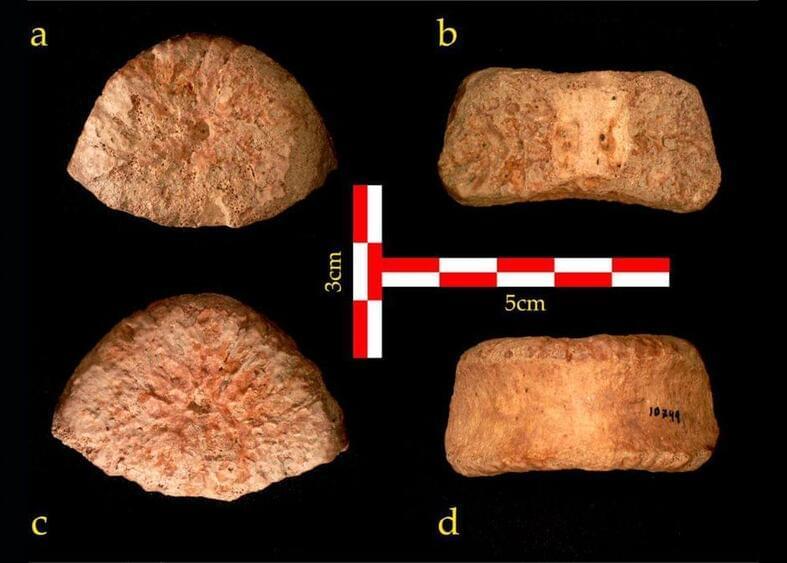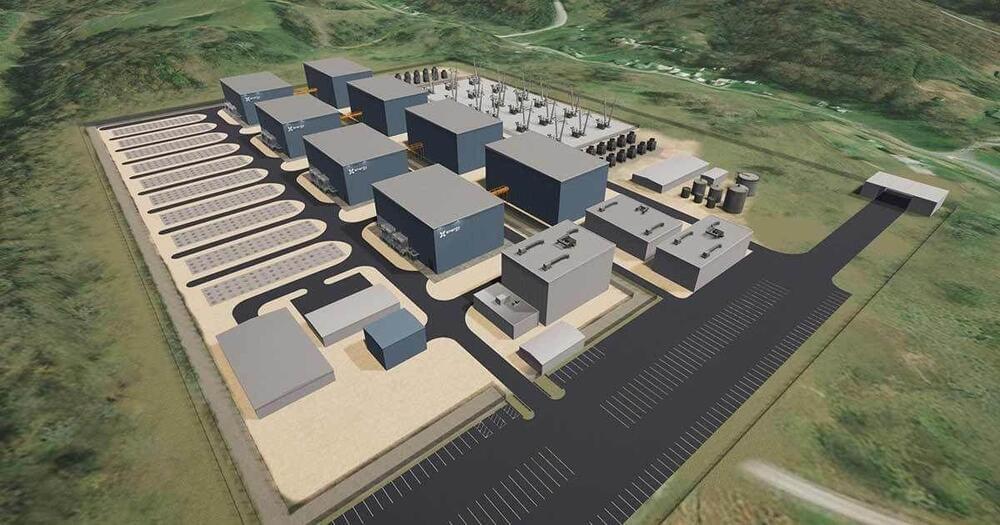Unleashed cosmic ray bombardment may have eaten up ozone, driving short-term climate swings.



There is a whole range of possibilities when it comes to prefabricated modular housing—some might be as simple as a prefab cabin in the woods or a home office in the backyard; others are designed as stackable and programmable smart homes, perhaps strong enough to withstand natural disasters or for seniors looking to age in place affordably.
Whatever it may be, the prefab industry continues to evolve. Singapore-based Nestron is yet another contender in this ever-expanding field, now offering the Nestron Cube Two X (C2X). This rather futuristic-looking smart living pod measures a relatively generous 377 square feet (35 square meters)—a sizable increase in floor area compared to the company’s 280-square-foot (26-square-meter) Cube Two of the same series, which was launched back in 2020, and is designed for three to four inhabitants. Additionally, the Cube Two X comes in two versions: either a one-bedroom or two-bedroom unit with different floor layouts within the same footprint.
Similar to the preceding Cube Two, the 18,000-pound (8,000-kilogram) Cube Two X sports an ultra-sleek exterior that features an insulated, FRP-paneled, galvanized steel frame, which the company says was designed to weather out natural disasters like earthquakes, hurricanes, and typhoons. However, the company notes that further fortifications can be done for clients looking for something even more resistant.

U.S. startup Geoship have created ‘dome homes’ which last up to 500 years and are resistant to fire, floods, earthquakes and hurricanes.
Made of earth-friendly bioceramic, Geoship’s geodesic domes envision a new future for humanity.
Although no images of the built domes have been released yet, Geoship has shared these renders of what the dwellings could look like.

Ooooops!!
A rocket stage set to smash into the moon on March 4 is no longer believed to be a piece of a SpaceX Falcon 9 rocket, but rather a booster from a Chinese rocket sent to the moon in 2014, experts say.
Bill Gray, an astronomer and the developer of the asteroid tracking software Project Pluto, initially identified the errant space junk (which had been given the temporary name WE0913A) as the upper stage of a Falcon 9 rocket, predicting that the debris would collide with the moon after hurtling through space for seven years.
Gray now believes his initial assessment was wrong, and he has updated his blog post with a correction. The doomed object isn’t the SpaceX upper stage — launched in February 2015 to send the Deep Space Climate Observatory satellite, or DSCOVR, 930,000 miles (1.5 million kilometers) from Earth — but is actually a rocket booster from China’s 2014 Chang’e 5-T1 mission, which launched on October 2014, he said.
The object is set to hit the moon traveling at roughly 5,771 mph (9,288 km/h) on March 4.
He’s absolutely right about birth rates and its implications for our species. OVER population is a disproven concept as far as our near and near-far future goes.
Elon Musk is the charismatic co-founder of PayPal and Tesla, as well as the founder of SpaceX, Neuralink, and The Boring Company. He serves as CEO of Tesla and CEO/lead designer of SpaceX. Watch along as he explains why earth doesn’t have a lot of time left.
Other business videos:
➟ “Most People Don’t Even Realize What’s Coming” | Elon Musk Shocking Speech (2021)
➟What Is The Price Of Success? — Elon Musk Speech.
https://www.youtube.com/watch?v=D-tTj6sm10M
➟Audience Stunned when Elon Musk Predicts a Climate Change.
https://www.youtube.com/watch?v=_ozlbGB57aE
This video is all about Elon Musk, Musk, Elon, Tesla, SpaceX, The Boring Company, Business, Jeff Bezos, Space, Cars, Bill Gates, Mark Zuckerberg, millionaires, billionaires, motivational, motivation, Elon musk motivation, Elon musk motivational, elon musk, elon musk motivation, elon musk motivational speech, elon musk inspiring speech, elon musk best speech, elon musk emotional speech, elon musk inspirational video, elon musk emotional, elon musk mindset, elon musk tears up speech, elon musk tears up, elon musk holding back tears, business core, elon musk zone, motivation core, DBbusiness and more topics!
All materials in these recordings are utilized for educational & motivational purposes and fall under fair use law. No copyright encroachment intended. In case you are or represent the copyright proprietor of materials utilized in this video and are object to the utilization of these materials, kindly reach out to me, and we will sort it out.


This article is an installment of Future Explored, a weekly guide to world-changing technology. You can get stories like this one straight to your inbox every Thursday morning by subscribing here.
In recent years, mountain communities in Chile have been facing longer and more intense dry spells thanks, in part, to rapidly shrinking glaciers in the Andes. This puts serious stress on local communities that rely on their fresh water.
But a team of Chilean climate experts have come up with a solution. In 2022, they will attempt to DIY their own glaciers, in hopes of supplying fresh water through the dry, summer months.

But some experts want more evidence.
A 1.5 million-year-old vertebra from an extinct human species unearthed in Israel suggests that ancient humans may have migrated from Africa in multiple waves, a new study finds.
Although modern humans, Homo sapiens, are now the only surviving members of the human family tree, other human species once roamed Earth. Prior work revealed that long before modern humans made their way out of Africa as early as about 270,000 years ago, now-extinct human species had already migrated from Africa to Eurasia by at least 1.8 million years ago, during the early parts of the Pleistocene (2.6 million to 11,700 years ago), the epoch that included the last ice age.


Machine learning can work wonders, but it’s only one tool among many.
Artificial intelligence is among the most poorly understood technologies of the modern era. To many, AI exists as both a tangible but ill-defined reality of the here and now and an unrealized dream of the future, a marvel of human ingenuity, as exciting as it is opaque.
It’s this indistinct picture of both what the technology is and what it can do that might engender a look of uncertainty on someone’s face when asked the question, “Can AI solve climate change?” “Well,” we think, “it must be able to do *something*,” while entirely unsure of just how algorithms are meant to pull us back from the ecological brink.
Such ambivalence is understandable. The question is loaded, faulty in its assumptions, and more than a little misleading. It is a vital one, however, and the basic premise of utilizing one of the most powerful tools humanity has ever built to address the most existential threat it has ever faced is one that warrants our genuine attention.
Full Story:
An international team of researchers has spotted the first isolated black hole that is wandering around in interstellar space.